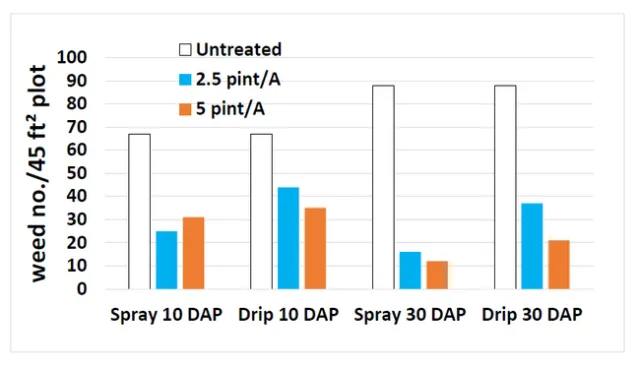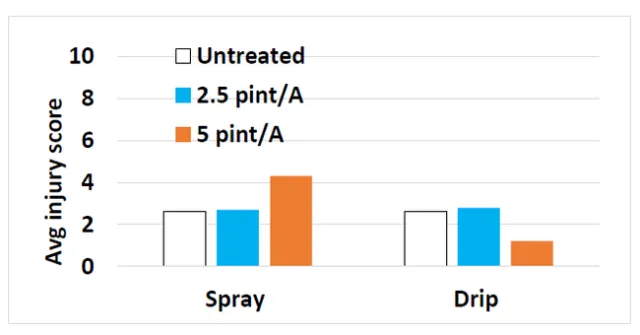Drip-applied Kerb (Pronamide) in lettuce
Over the years of Kerb use in lettuce (more like decades) there has been a lot of work on application methods. Our transplanted lettuce in southern California is usually grown on drip and when possible, we like to apply all things through it. Our fields are surrounded by four cities and folks there just don't seem to enjoy sprayer rigs that much.
At the UC Hansen Research & Extension Center (clay loam soil) we applied Kerb at 2.5 and 5 pints/A rate either via drip or bed spray. The herbicide was applied with second irrigation after transplanting of ‘Inferno' romaine (great name for green lettuce). The irrigation continued after Kerb application to assure moisture movement from drip tape past the plant lines.
Weed control:
Our primary weed species was Chenopodium but not the usual suspect, but C. quinoa – volunteer quinoa from a prior variety trial that was harvested, perhaps, a little too late. Larger plants were still green at 10 days after planting (DAP) even in treated plots, but most were stunted and failed to develop when assessed at 30 DAP (Figure 1). Both application methods and rates were similar in efficacy, providing 63-86% weed control compared to untreated (P=0.001) (Figure 2). Few weeds survived in drip-application plots near bed shoulders were wetting front did not move the herbicide sufficiently or where concentrations were likely sub-lethal.


Lettuce injury:
When assessed at 10 DAP we found a few dying plants, but the levels of rapid decline were similar in all plots (data not shown) and the cause was a fungal soil borne pathogen, likely Fusarium. Both herbicide rates resulted in similar injury levels (Figure 3) but 5 pint/A spray application had greater injury (P=0.005) than the same rate applied via drip. We plan on harvesting the trial in a couple weeks and do not expect that these injury levels will affect yield or head weight.

